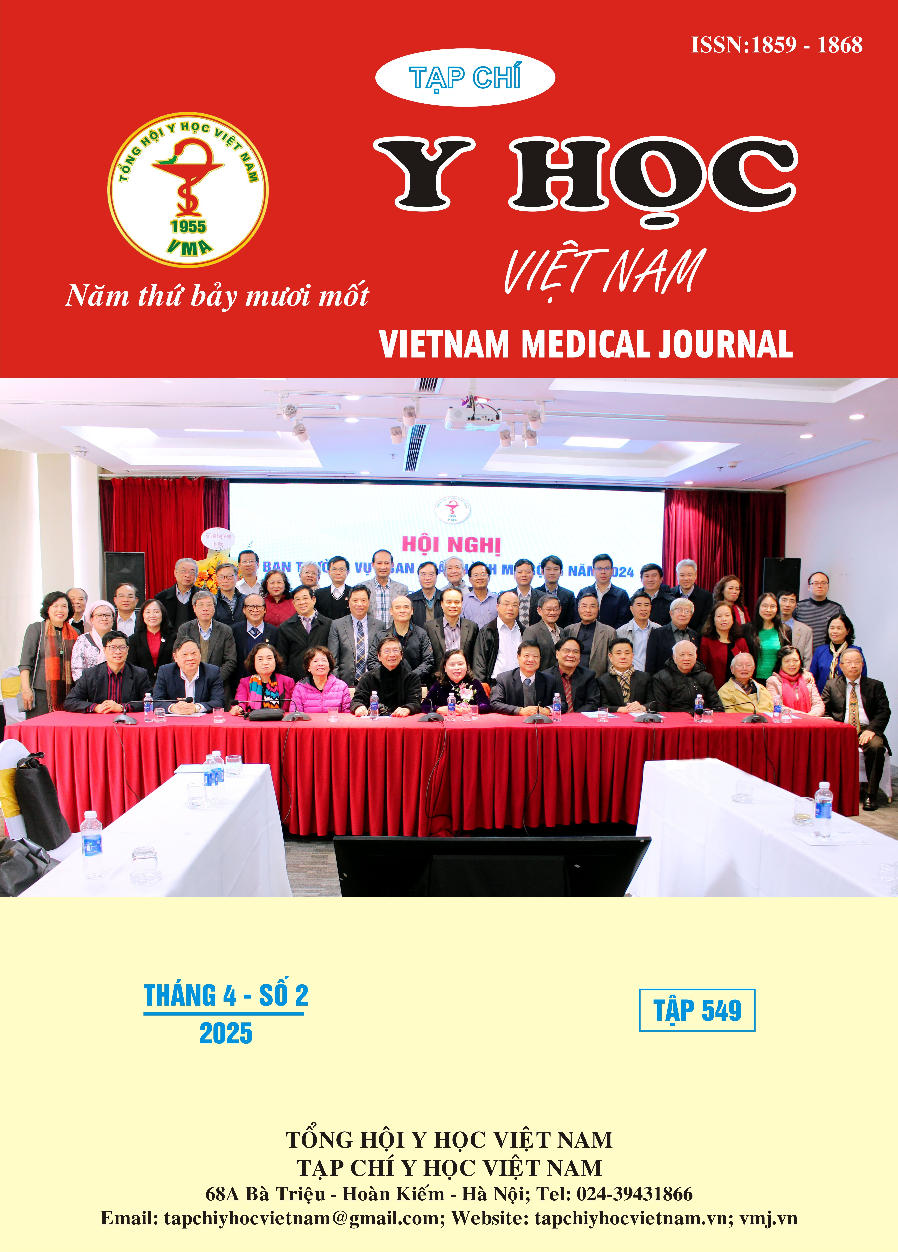ASSOCIATION BETWEEN RS1056836 POLYMORPHISM OF CYP1B1 GENE AND CERTAIN CLINICAL AND PARACLINICAL FEATURES IN PATIENTS WITH PRIMARY ANGLE-CLOSURE GLAUCOMA
Main Article Content
Abstract
Objective: To determine the association between CYP1B1 rs1056836 polymorphism and certain clinical, paraclinical features in patients with primary angle-closure glaucoma (PACG). Subjects and Methods: A clinical descriptive study was conducted on 101 PACG patients at 103 Military Hospital, Hanoi Eye Hospital branch 1 and branch 2 from January 1, 2023, to August 31, 2024. Results: There are three genotypes CC, CG and GG; The CC genotype was the most common (86.1% in the PACG group and 83.3% in the control group). No significant association was found between rs1056836 polymorphism and family history, ocular axial length, anterior chamber depth, lens thickness and history of diabetes (p > 0.05). However, the CG genotype was more prevalent in the chronic PACG group (29.2% compared to the acute PACG group 9.1%), and in the hypertension (25.7% compared to the without hypertension 7.6%), p < 0.05. There is an association between rs1056836 polymorphism and progression of anterior chamber angle closure and concomitant hypertension in patients with PACG. Conclusion: The rs1056836 polymorphism was associated with acute/chronic disease and hypertension, but no significant association was observed with family history, axial length of the eyeball, anterior chamber depth, or lens thickness and history of diabetes.
Article Details
Keywords
rs1056836, CYP1B1, primary angle-closure glaucoma
References
2. Kondkar A A (2021). Updates on Genes and Genetic Mechanisms Implicated in Primary Angle-Closure Glaucoma. Appl Clin Genet, 14: 89-112.
3. Chouiter Leila, Nadifi Sellama (2017). Analysis of CYP1B1 gene mutations in patients with primary congenital glaucoma. Journal of pediatric genetics, 6(04): 205-214.
4. Calero-Dueñas Noelia, Mateos-Olivares Milagros, Ussa Fernando, et al. (2022). Polymorphisms in CYP1B1 gene and the risk of suffering Primary Open-Angle Glaucoma: Systematic review and meta-analysis. European Journal of Ophthalmology, 32(4): 1841-1849.
5. Chakrabarti S, Devi K R, Komatireddy S, et al. (2007). Glaucoma-associated CYP1B1 mutations share similar haplotype backgrounds in POAG and PACG phenotypes. Invest Ophthalmol Vis Sci, 48(12): 5439-44.
6. Seah Steve KL, Foster Paul J, Chew Paul TK, et al. (1997). Incidence of acute primary angle-closure glaucoma in Singapore: an island-wide survey. Archives of ophthalmology, 115(11): 1436-1440.
7. Prum Bruce E, Herndon Leon W, Moroi Sayoko E, et al. (2016). Primary angle closure preferred practice pattern® guidelines. Ophthalmology, 123(1): P1-P40.
8. Bhattacharjee Ashima, Banerjee Deblina, Mookherjee Suddhasil, et al. (2008). Leu432Val polymorphism in CYP1B1 as a susceptible factor towards predisposition to primary open-angle glaucoma. Molecular vision, 14: 841.
9. Dai Xiaohua, Nie Shangwu, Ke Tie, et al. (2008). Two variants in MYOC and CYP1B1 genes in a Chinese family with primary angle-closure glaucoma. Chinese Journal of Medical Genetics, 25(5): 493-496.
10. Malik K. U., Jennings B. L., Yaghini F. A., et al. (2012). Contribution of cytochrome P450 1B1 to hypertension and associated pathophysiology: a novel target for antihypertensive agents. Prostaglandins other lipid mediators, 98(3-4): 69-74.


